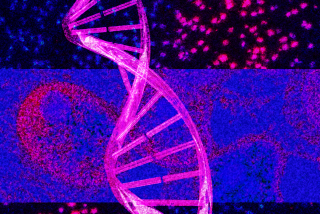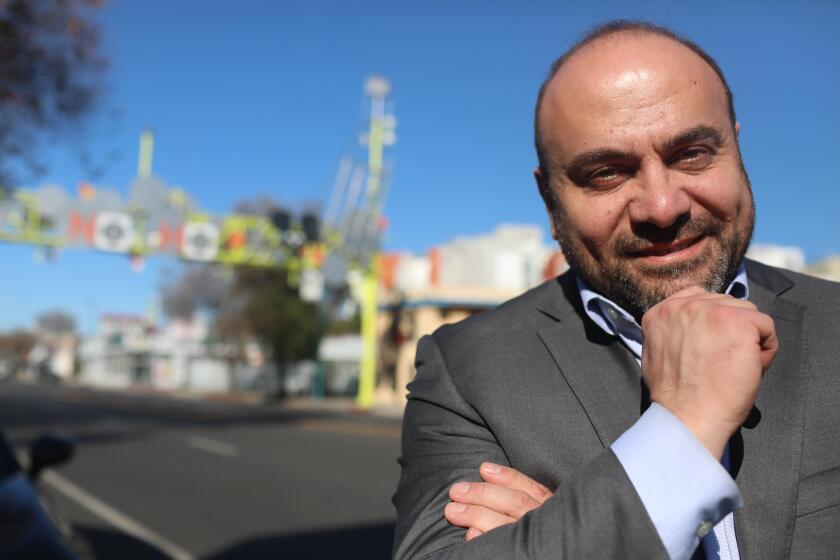BioWatch’s many bugs

It’s possible that not every problem has a technological solution. That will come as a shock to U.S. policymakers, who since the 9/11 terrorist attacks have invested in multiple technologies to protect us from evildoers. Some have been a success, while others — such as enhanced surveillance techniques or airport scanners that can peer through clothing — are often seen as unacceptable invasions of privacy. And then there are ideas that simply don’t work or are impractical, such as scanning every shipping container entering U.S. ports for nuclear weapons.
The BioWatch program, announced by President George W. Bush in 2003 to guard against biological attacks, appears to fit into the latter category.
Times staff writer David Willman has raised alarming questions about BioWatch that demand answers from Homeland Security chief Janet Napolitano — who, despite requests for information from congressional leaders, has remained silent. Meanwhile, she is considering whether to spend $3.1 billion in taxpayer money on a next-generation version of the system, even though preliminary tests indicate that the new devices are little more reliable than the ones they would replace.
FULL COVERAGE: BioWatch system plagued by false alarms
BioWatch consists of an array of sensor devices placed throughout 30 U.S. cities, concentrated near the venues of high-profile public events. Filters in the devices capture pathogens that cause anthrax, smallpox, the plague and other diseases that might be unleashed in a biological attack; the filters are tested daily by health officials. Yet the system has been plagued by false alarms — a report by the Government Accountability Office confirmed more than 100 of them since the program was put in place. The system is considered so unreliable that state and local health officials have never ordered evacuations or emergency medications when BioWatch has raised alarms. Instead, some say they prefer to check hospital admissions and follow-up samples.
That approach completely undermines the purpose of BioWatch, which was designed to promote a quick response to a bioterrorism incident before large-scale hospital admissions occurred.
The problems with the sensors are twofold. First, they’re not sensitive enough to detect a small release of the sort that could kill thousands of people. And as for a big release, such as a terrorist spraying germs over a city with a crop duster, it would require a very large number of sensors to do the job reliably. Second, they can’t tell the difference between a deadly pathogen and a benign but related germ, which is why there have been so many false alarms. Diseases such as tularemia, or rabbit fever, have many close cousins that can cause unnecessary panic when picked up by BioWatch sensors.
Homeland Security officials insist that the technology is frequently updated, and they’ve been ceaseless boosters for the program despite reams of documentary evidence of its failures. For example, Homeland Security’s chief medical officer, Alexander Garza, told The Times in July that there had never been a false positive result, even though scientists at the federally funded Lawrence Livermore National Laboratory had filed five patent applications as of 2006 to fix “a higher than acceptable rate of false positive … results,” according to one such application. Apparently, the distinction is that Homeland Security officials don’t consider the detection of benign organisms to be false positives, because the sensors did detect something. Outside a government bureaucracy such as Homeland Security, it’s hard to imagine anyone taking such a nonsensical argument seriously.
Meanwhile, Napolitano still may proceed to fund the “Generation 3” upgrade to BioWatch even though her top expert on anti-terrorism technology reportedly considers it a waste of money. Insiders told Willman that Dr. Tara O’Toole, Homeland Security’s undersecretary for science and technology, would prefer to spend the $3.1 billion on more effective measures such as computer networks to speed the distribution of medicine among HMOs, hospitals and public health agencies in the event of an attack. Tests of the upgraded BioWatch system, which O’Toole has supervised, have found that it is neither sensitive nor durable enough to be considered reliable.
Backing up O’Toole is the Government Accountability Office, which in a September report called for more disclosures on analyses of the technology and stated that “critical information related to both the costs and benefits of the planned Gen-3 approach remains to be explored.” The GAO’s frustration is echoed by a pair of congressional leaders. Rep. Fred Upton (R-Mich.), chairman of the House Energy and Commerce Committee, and Rep. Cliff Stearns (R-Fla.), head of its subcommittee on oversight and investigations, last week sent Napolitano a letter demanding information on BioWatch that they had first requested in July.
Congress can’t stop Napolitano from spending Homeland Security money that has already been appropriated, but it can threaten to slash her budget next year if she continues to stonewall. Unfortunately, we don’t have high hopes that it will do so; members don’t want to look soft on the issue of terrorism defense, even if that means funding ineffective programs. President Obama needs to demand more accountability, and Congress must continue to press for more answers. Unless those answers are forthcoming, the next generation of BioWatch should be squashed.
More to Read
A cure for the common opinion
Get thought-provoking perspectives with our weekly newsletter.
You may occasionally receive promotional content from the Los Angeles Times.










